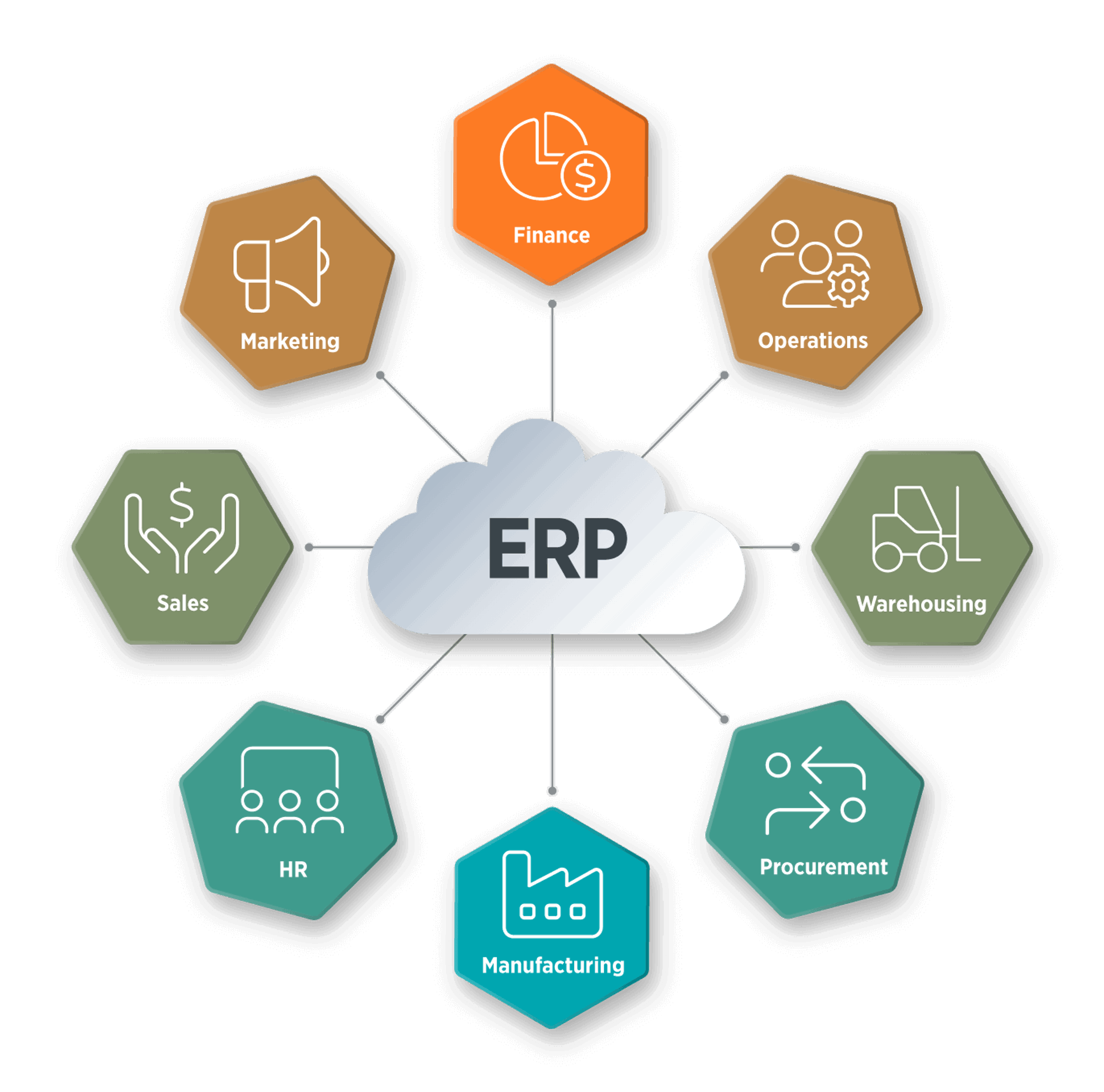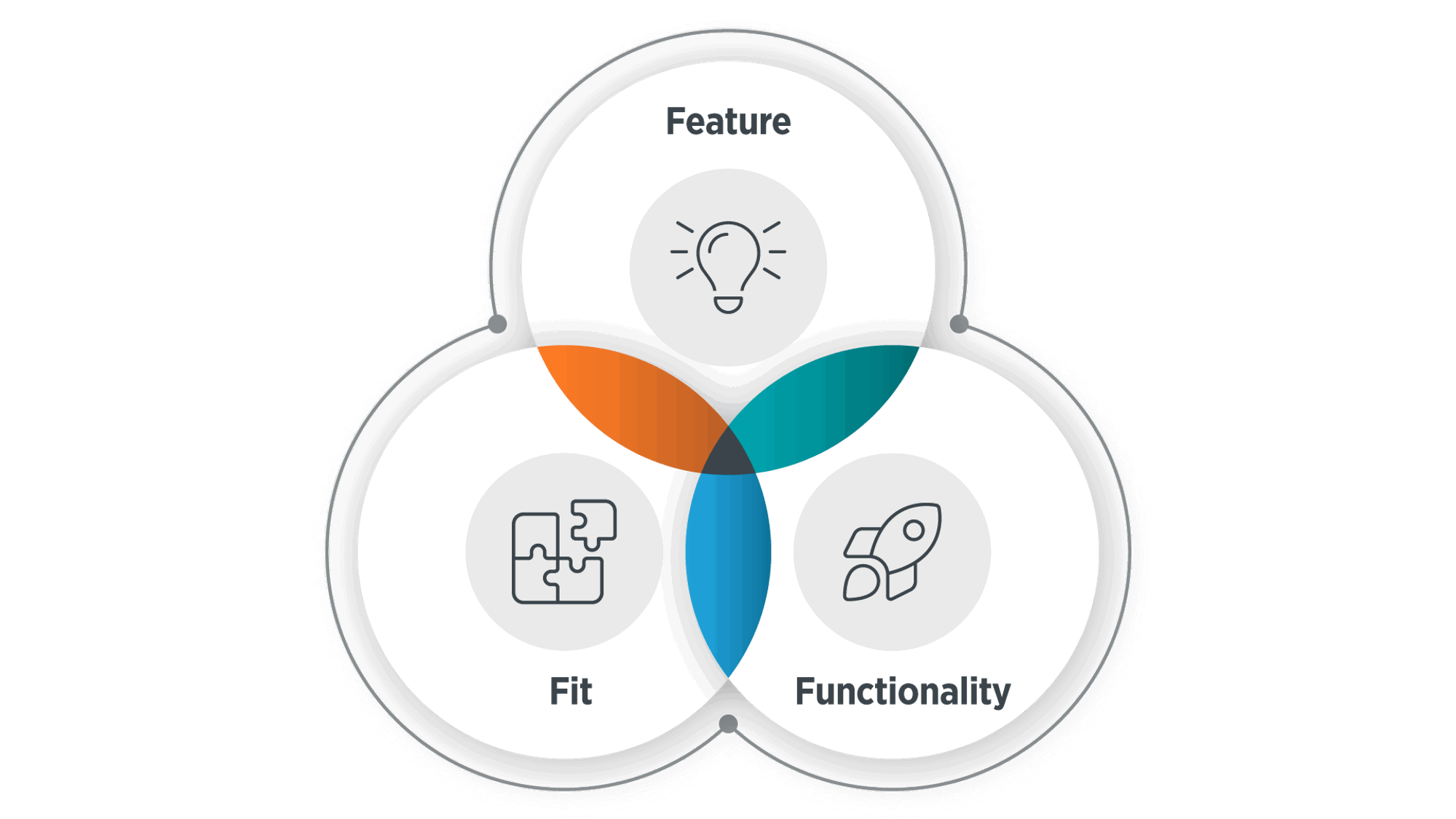Sounding familiar?
Based on our experience over the past 20 years, these are some of the most common indicators that you need to invest in a better business management platform.

Enterprise Resource Management

As successful businesses scale and grow, the time comes where legacy applications no longer serve the best interests of their employees, customers, and stakeholders.
We can help you.
There can be many signs that it’s time to evolve and mature as a business, and the process of choosing the right software solution to help your organisation do this successfully can be complex, confusing, and frustrating.
BUT – simply having an ERP doesn’t set your business on a path to success. You need to find an ERP with the right features, fit, functionality, and then an experienced partner to help you make it work for your organisation and avoid a costly and embarrassing failed implementation.
We can make it easier for you.
Simply put, Enterprise Resource Planning (ERP) software empowers businesses to simplify, integrate, and automate time-consuming processes, giving greater insights to decision-makers, and enabling smarter, faster decision-making – leading to better profits, more satisfied customers, and happier employees and stakeholders.
Combining a range of modules, specific to your organisational and industry needs, ERP centralises data from across your organisation (finance, operations, warehousing, procurement, manufacturing, HR, sales, and marketing) making it possible to see the influence and impact of each division on productivity and revenue in real-time.
It also makes it possible for key stakeholders and decision-makers to access that data securely, and with the confidence that they’re using the most up-to-date version.

You may have a basic financial management application, like Xero, that you’ve outgrown. Or perhaps you’re still doing everything on spreadsheets, and the errors and time taken to manually update, manipulate, and interrogate your data has become too much. Or perhaps you’ve found yourself in a situation where you have multiple ERPs or a collection of business management tools that aren’t integrated, causing delays and confusion.
Sounding familiar?
Based on our experience over the past 20 years, these are some of the most common indicators that you need to invest in a better business management platform.
If Accounts is using one system for receivables and payables; Sales is using another for customer orders; inventory, shipping and receiving is in yet another – that means the left hand doesn’t know what the right hand is doing, and it’s time to look at an ERP to consolidate everything.
If you hear your employees complaining about how hard it is to use certain tools, or that it’s so time-consuming downloading one report from one system to upload it to another, only to then export the data, to then analyse it in a third system or application – it’s a good idea to start considering an ERP. If your employees are unhappy, chances are your customers aren’t getting a great experience either!
If Excel is your primary database for sales figures, accounting, customer data, inventory etc., you are guaranteed to have siloed data that contains errors, is seldom up to date, is not secure, and has required excessive amounts of time to manually key and manage. Spreadsheets are awesome, powerful tools, when used for the intended purpose and with appropriate boundaries. Acknowledge the red flag and consider moving to an ERP.
Do you have sales data, inventory data, even human resource data in multiple databases, but when you try and get a single report, there are always unexplained discrepancies – making it hard to know which decision to make to be successful? You guessed it – time to think about getting an ERP!
If budgeting, forecasting, planning, and reporting are constantly hampered by not being able to trust whether you’ve got the latest data, or someone’s ‘Version 2.4.Final.7.DoNotUse’ spreadsheet, start researching ERPs.
Can you quickly and easily find and compare the number of sales made on a specific date, over a 5-year period? If it takes you longer to find the data than it does to answer that question, you guessed it – it’s time to be looking at an ERP.
If you need more admin staff than operations staff, chances are you’ve got too many systems that aren’t connected and are causing a LOT of duplicated (and wasted) effort. An ERP can reduce administrative burden significantly.
Like the above, but with the added complexity of different businesses that need to work in sync with each other – but aren’t!
We all know that being more organised, with better data at our fingertips is going to help us run our businesses more successfully.
Think about a teenager’s bedroom floor – they might be able to find ‘the black 1998 Pearl Jam Concert t-shirt’ amongst the piles of clothes, shoes, and other detritus, but you, nor anyone else in the family can. And if they’re on the phone telling you ‘they need it now’ because otherwise they can’t go to some event, meaning you’ll end up child-minding that night rather than heading away for the weekend, and you’ll miss collecting the dog from the kennel so that’s going to be an extra fee….well, we can see why everything would just be better if there was a single, trustworthy system that everyone in the family used for storing and locating clothing.
It's the same with ERP.
When you remove barriers to efficiency by automating processes, and centralising data, your ability to make smarter decisions that can improve your productivity, profitability, and the experiences of both your employees and customers is vastly increased.

“The data I need is way more accessible. I now have more time to write funkier reports — and, quite honestly, that speaks to me. The business is delighted with the productivity improvements.”
Renee Jordan | Finance Manager, Harcourts Cooper & Co
“We have realised improved data accuracy, been able to standardise our business processes, and gained the ability to automate business tasks. The main area where we’ve seen an immediate impact is in the accuracy of our glass inventory in the four Metroglass factory sites.”
Nick Johnson | CIO, Metroglass
“Since we implemented NetSuite we’ve grown well over 30%, but we haven’t had to add more hours or people to our accounts function."
James Jorgensen | CFO, Natural Pet Food
“Instead of taking days of intensive work to produce AP, AR, and P&L reports for the management team and bank, it now takes just seconds,” says Bellew. “And there’s no need for third-party contractors to sort out spreadsheets. I can just jump on from home or on the road and access the information I need. It’s nice and easy and always there.”
Lance Bellew | CFO, Wholesale Seeds
What’s important to note is that while an ERP can provide relief to the pains and problems your business may be experiencing, it will also act as a foundation for growth, as well as more successfully managing your way through tough or challenging periods.
For more, read 11 ways you’ll look good with a new ERP.
So, you’ve acknowledged your business has a few red flags when it comes to its processes and data management, and you’re keen to experience some wins of your own, like our customers have - but you may be thinking, ‘which is the right ERP for me?’
Any of them. Probably. So long as you’ve got enough money and time to throw at the project. The trick is finding a proven implementation partner who understands your industry and how your people work, and has the capabilities, experience, and commitment required to deliver you a successful, on-time, and within budget outcome.

These are the modules that come with an ERP that will provide you with capability to manage the likes of:
Functionality focusses on the actions and activities that the ERP can do, for example:
While most ERPs within a certain tier will invariably tick all the features and functionality requirements for most organisations, ‘fit’ is the really important element for getting the right ERP for your needs – and it’s the hardest one to ‘box tick’ for.
Fit can cover a multitude of things, such as:
In our 20 years of experience as an ERP partner, we’ve learnt that there are three ERPs which most consistently meet the needs of businesses in Australia and New Zealand:
As stated above, in a high percentage of cases, the features and functionality of these three will fulfil the needs of most organisations looking for a new ERP. But it’s the fit that really counts. And if fit can be difficult to figure out, how do you move forward?
An ERP partner, like Fusion5, is an organisation that not only supplies ERPs, but is also skilled at scoping your requirements (because you don’t always know what you don’t know), implementing the solution, ensuring the solution is going to fit with the rest of your business and your plans for the future, and ensuring your people are trained and prepared to adopt their new systems quickly and efficiently, so you can start reaping the benefits as soon as possible.
According to Panorama Consulting Group’s 2022 ERP Report, organisations that worked with a partner to implement their ERP had fewer budget overruns due to organisational issues, redesign challenges relating to additional technology needs, and data and technical issues. They also report that those respondents that did not engage a partner experienced lower benefit realisation than those that did work with a partner.
As our founder Rebecca Tohill says: “Business growth isn't about luck. It's the outcome of making our customers more successful, championing innovative thinking, and investing in the best people."
As a partner, we are more than just resellers or implementers. We focus on people, on processes, and on the outcomes that your organisation will value.

Finding an ERP partner with experience in your industry and a deep understanding of your business’s unique processes and nuances will be key in selecting the best-fit ERP platform and ensuring ROI.
With experience implementing ERP projects for hundreds of organisations in Australia and New Zealand, Fusion5 has a wealth of knowledge and expertise that it brings to each engagement. Our proven implementation methodology is centered around three key areas to ensure a successful customer journey:
This is all about getting to know you – as it’s important to ‘get it right’ from the beginning. This stage involves aligning ourselves with your organisation's culture and understanding your business drivers. By identifying project drivers and solution pain points, we can create a well-defined Project Canvas landscape that allows us to focus on the right aspects of your journey and bring the right team into the engagement.
We’ll take you through a strategy workshop, which leverages the Project Canvas tool to ensure clear, measurable goals and outcomes agreed upon by stakeholders.
You’ll have access to our practical guides for help along the way to ensure project readiness. These guides will help you through project initiation, governance, end-user training, acceptance testing, and data migration.
We also recognise the importance of organisational change management (OCM) and have baked it into every stage of our methodology. Our consultants work closely with your team to design solutions that excite and engage your people, and our OCM readiness assessment will ensure that high-impact areas are assessed, and a strategy is developed to ensure successful adoption of the ERP.
And lastly, we understand that implementing a project like this can be a significant burden on your business, so we take great care when planning, to minimise the impact on BAU while still meeting objectives.
We have a talented in-house customer success team for BAU support, plus the infrastructure and programmes for continuous customer support so you can get the most out of your solution.
Each customer is assigned an Account Manager and a Service Delivery Manager to manage the relationship and to make sure you get all the support you need to get up and running with your solution.
Regular meetings are held to share strategic roadmap and health check reviews, and an adoption assessment is conducted post-implementation to assess your organisation's use of the solution to addresses any areas that may require extra support.
Chain and rigging supplies switches to cloud ERP for faster reporting and real-time data visibility
Running a successful operation in the manufacturing industry is no mean feat! From managing supply chains to overseeing production, there are a lot of moving parts to keep a handle on.
With an ERP you’ll know exactly where an order is, who generated it, and where it’s going, giving everyone a whole new level of accountability and visibility. And with the right ERP system in place, it can be a game-changer for manufacturing businesses looking to stay competitive in today's fast-paced market.
Learn how New Zealand-based manufacturer, Chain and Rigging Supplies, switched from its outdated software to a cloud-based ERP to enjoy speedier reporting and real-time data access.
> Read the Chain and Rigging Supplies case study
Australian Meat Processer Corporation gets an affordable, fully integrate ERP system for more control over its operations
Agribusiness is facing some of the greatest challenges the sector has ever seen including climate change, environmental factors, labour shortages, and shipping issues. Fortunately, the industry does not shy away from adopting new technology - and ERP is already widely used in agribusiness.
Owners should be spending more time on core activities rather than being bogged down by manual processes. An ERP system can help optimise day-to-day operations, coordinate supply chains effectively, manage equipment, and ensure the right staff are in the right place at the right time.
Learn how the Australian Meat Processor Corporation worked with Fusion5 to implement an affordable, fully integrated ERP system to centralise its data and take control of its operations.
Wholesale Seeds gets cloud ERP to run reports in seconds, not days!
Wholesale distributors are primarily concerned with the management of money and keeping that all-important cash flow ticking over is key to a successful business operation. Any delays in payment for a sale lowers your return on capital. Success is moving the right products, to the right people, at the right time.
A modern ERP gives total control of your operation with real-time insight into inventory, costs, goods in transit, and reorder quantities. All this facilitates better communication with the customer and reduces delays.
A fully integrated system can automate sales order processing, manage warehouses and supply chains, and helps determine profitability. What’s more, you can easily pull all this data into a dashboard for review.
Learn how Wholesale Seeds went from crisis point with stock level inaccuracies and taking ages to build reports, to smooth sailing and even growth with a cloud-based ERP. They now run AP, AR, and P&L reports in seconds, not days!
> Read the Wholesale Seeds case study

 ×
×